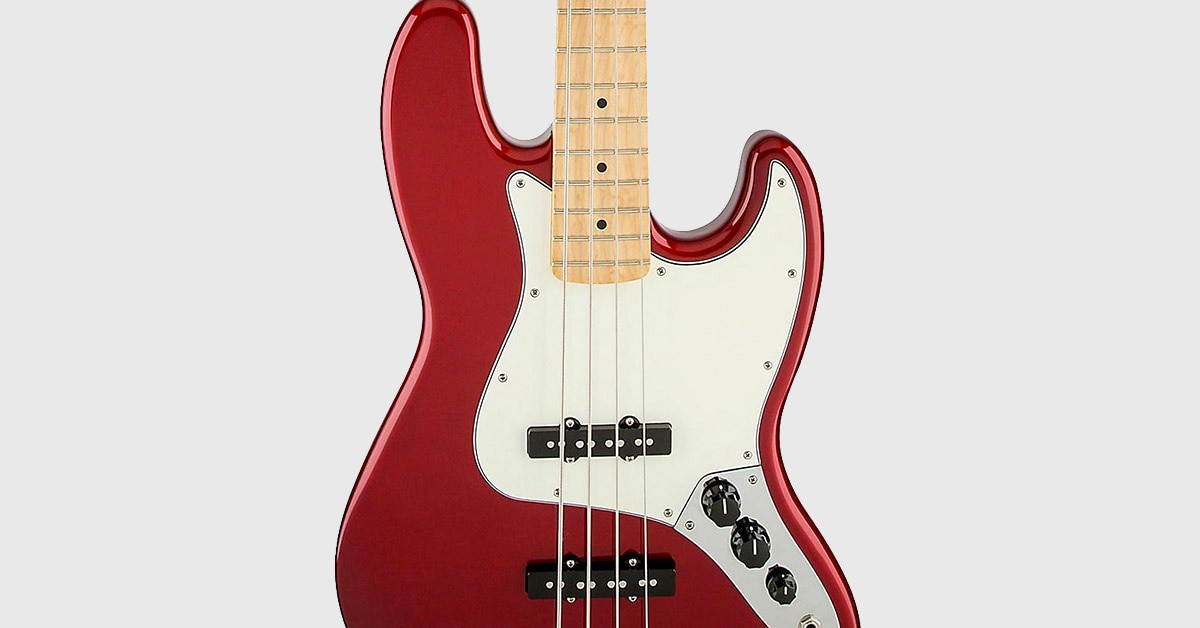The strings on your electric bass have a powerful influence on its tone and playability. If you’ve explored Musician’s Friend’s huge selection of bass guitar strings and come away a little confused, this guide’s for you. We’ll walk you through the ins and outs of choosing the bass strings that make sense for both your music and instrument.
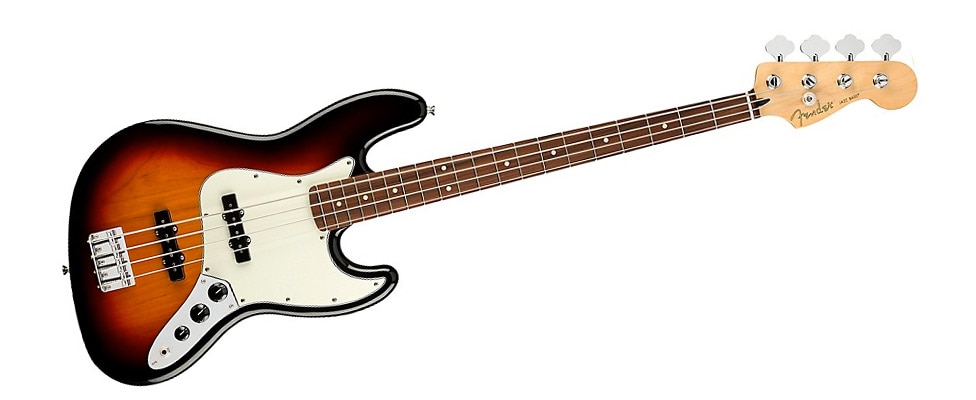
With its 34” scale, the Fender Jazz Bass is typical of 4-string basses, giving you dozens of scale-specific string sets to choose from.
Table of Contents
How Often Should I Change My Bass Strings?
How to Choose the Right Strings for Your Bass
Choosing the Right Scale Length
Bass String Gauges
Bass String Construction Methods
Bass String Materials
How Often Should I Change My Strings?
There’s no one answer to this eternal question. The kind of sound you’re after and how frequently you play will largely dictate how often you should change your strings.
You’ve probably heard stories about bassists who haven’t changed their strings in decades. These are usually players who love the flat, overtone-free sound that was the signature of old-school soul bassists. Listen to old Motown and Stax recordings and you’ll hear that sound: a deep thud with little or no resonance. What you’re likely hearing is essentially the sound of dead strings. And that just may be what you want. But keep in mind that ancient, rusted strings are likely to infect your frets and pickups with corrosion—causing damage that’s far more costly than a new set of strings. If you’re looking for that relatively dead-sounding “thunk,” a set of pure nickel strings will give you that as we discuss later. Another option is to add a piece of felt as a makeshift mute to your bridge that produces more deadened string response. Some Rickenbacker basses have mutes built into the bridge saddles to reproduce old-school bass sounds.
If you play rock, pop, jazz, fusion, reggae, or especially funk, you’ll likely want more character and “zing” in your bass tone. Dead strings can’t deliver the pop, punch, and harmonically rich overtones that “lively” strings produce.
When you install a new set of strings on your bass, you may be shocked by their brightness if it’s been a while since your last string change. It’s sort of like cleaning your windshield after a lot of grunge has accumulated. It’s only in retrospect you realize how much visibility was missing. It’s the same with your bass: you’ll be amazed by the amount of tonal clarity that was missing.
That said, the tone may seem too bright at first. But give the new strings a break-in period; they’ll become less bright the more you play them. (We’ll talk about factors such as string composition that also contribute to tone and brightness shortly.) You’ll also notice that you need to retune more often with new strings due to their tendency to keep stretching. Because of this, it’s a good idea to install new strings well in advance of any gigs. You’ll also want to let the stretch factor settle down before making any adjustments to your intonation.
Our friends at Fender demonstrate the correct way to change bass strings.
How to Choose the Right Strings for Your Bass
The most important factors to consider in shopping for bass guitar strings are:
- The number of strings on your bass
- The scale length of your bass
- Your playing style and music genre
- How often you play
- The sound character and tone you want to achieve
The things that impact those factors are:
- String gauge
- String construction materials
- Type of string winding
- The type of coating (if any)
(At Musician’s Friend we make the shopping process simple by letting you filter your search based on the string characteristics you’re looking for.)
We’ll next look at each of these variables to come up with the strings most likely to work for you and your bass.
Choosing the Right Scale Length
Scale length is the measurement from the bridge saddles (or ferrules on string-through basses) to the nut at the end of the fretboard. Many bass strings are sold in specific lengths to match the scale length of your bass guitar. The most common designations are: short, medium, long, and extra long or super long scales.
Most basses such as Fender’s Precision and Jazz Bass have a 34” scale—considered a long scale. Short scale basses are less common, Hofner’s “violin” bass models with their 30” scale and Gibson EB basses at 30.5” being examples. Five- and six-string basses often have 35” or longer scales.
If in doubt, check your manufacturer’s website or measure the length between the nut and bridge saddles. However if your strings are routed through the body of the bass, things get a bit more complicated. Since bass bodies vary in thickness and the cup-like ferrules that hold the ball end of the string in place have different depths, it’s necessary to measure the lowest pitched string removed from the bass. First, with the string installed, mark the spot where it contacts the nut. Then remove the string from the bass and measure it from the inner end of the ball to the point you just marked. This will give you a precise measurement when shopping for strings.
D’Addario’s sizing is typical of most string manufacturers:
- Up to 32" Short
- 32” to 34” Medium
- 34” to 36” Long
- 36” to 38” Super Long
While it’s possible to cut bass strings to the correct length, you risk causing the wrap to separate from the core wire. Many guitar techs and bassists also feel that wrapping excess string around the tuner post can potentially deaden tone and cause poor intonation. You also risk the string slipping off the post causing sudden detuning—an embarrassment in mid-performance.
Scale-specific strings usually are tapered with a thinner portion that wraps more easily around the tuner’s post and on the bridge end for enhanced sustain. On those strings that have silk wraps at each end be sure that the silk does not make contact with either the bridge or nut.
Bass String Gauges
String gauges—the diameter of the string—are expressed in thousandths of an inch. The heavier a gauge the lower the tone it is capable of producing. Generally speaking, heavier gauges produce richer tone, but demand more strength in your fingers.
Most medium-gauge 4-string bass sets range between .045 and .105. However, there are many variations. Here’s a run-down on some of the most common gauge ranges based on manufacturers’ weight designations:
|
Weight Designation |
6 |
1 |
2 |
3 |
4 |
5 |
|
Extra / Ultra Light |
NA |
.030 / .035 |
.050 / .055 |
.070 / .075 |
.090 / .095 |
N/A |
|
Light |
.028 |
.040 |
.060 |
.080 |
.100 |
.120 / .125 |
|
Medium |
.030 |
.045 |
.065 |
.085 |
.105 |
.125 / .130 |
|
Heavy |
.032 |
.050 |
.070 |
.090 |
.110 |
.130 / .135 |
|
Extra Heavy |
.035 |
.055 |
.075 |
.095 |
.115 |
.135 / .145 |
Some manufacturers take a mix-and-match approach in creating their string sets. For example, you’ll find 4-string sets in which the G and D strings are of medium weight while the A and E string gauges are typical of light sets. Similarly, an otherwise light 5-string set may contain a heavier .130 gauge B string.
Some bassists prefer to buy individual strings in gauges that match their own preferences rather than being limited to those gauges found in string sets.
There is no simple formula that can tell you what strings will sound best to you ears and feel best to your fingers. As with the various string compositions and wraps that we’ll discuss next, experimentation is the key to finding the right gauges. A good place to start is with a medium set —the weight most commonly factory installed on new basses.
Bass String Construction Methods
Most electric bass strings have an outer wrap around a steel core wire. The most common winding metals are stainless steel and nickel. The type of winding affects both the feel and tone of the string.
The most popular windings are:
Roundwound: By far the most popular, roundwound strings have round wrap wires made of stainless steel or nickel. Stainless steel offers brighter, louder sound that enhances slapping and popping techniques. They were originally developed by Britain’s Rotosound company for The Who’s bassist John Entwistle who wanted clear, piano-like tones to complement his lead bass playing style. Roundwounds are popular with rock and funk bassists and have a ridged or knurled texture like the edge of a quarter. This texture wears down frets over time and tends to produce more finger noise.
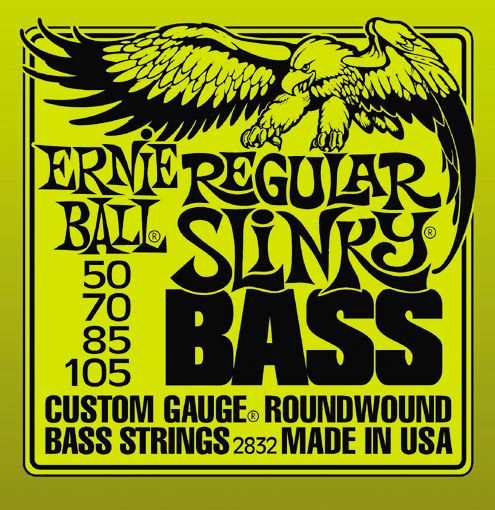
Ernie Ball Roundwounds have bright, clear tone making them a favorite with many bassists.
Flatwound: Popular with jazz and old-school soul bassists, they have a steel core wire wrapped with a flat wire that has a smooth feel and produces a mellower, rounder tone than roundwounds. Flatwounds were the only type of bass strings available until the 1960s when roundwounds were developed and overtook them in popularity. However, they continued to be used by jazz, country and blues bass players. They’re also often used on fretless basses since their smoother finish causes less fretboard wear.
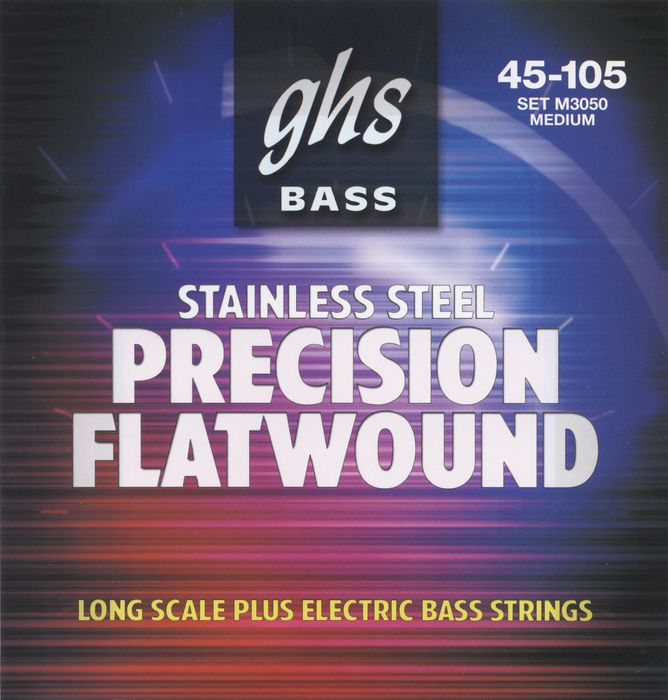
GHS Precision Flatwounds combine the smooth playability of their polished stainless wrap with deep, percussive tone.
Groundwound: Also called half round, they are manufactured like roundwound strings, but are then ground or pressed to produce a partially flattened surface that reduces finger noise and fret wear while offering most of the brightness of roundwound strings.
Tapewound: This least common type of bass string has a layer of nylon wrapped around the metal winding wire. Aside from having the softest touch, they produce a dark and soft tone that is similar to that of an upright bass. They’re usually black in color.
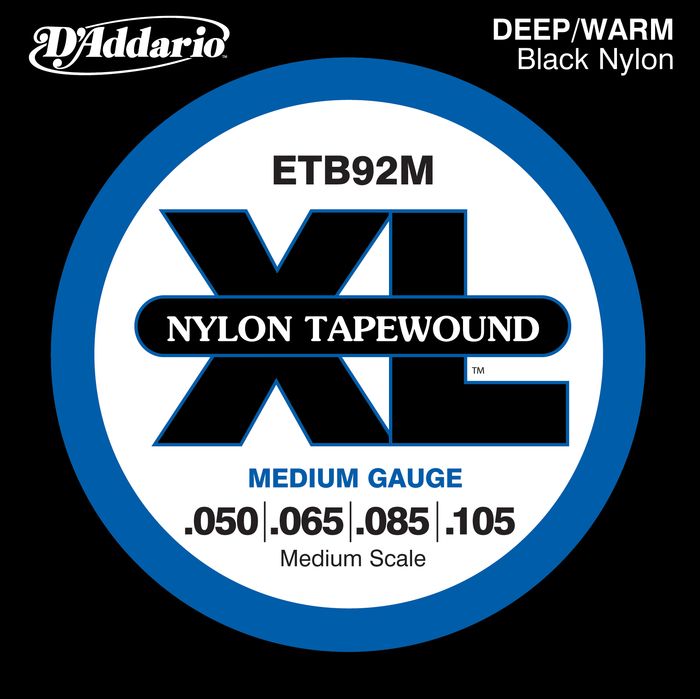
Made with a comfortable flattened wrap, D'Addario Nylon Tapewounds produce the warm tone of an upright bass.
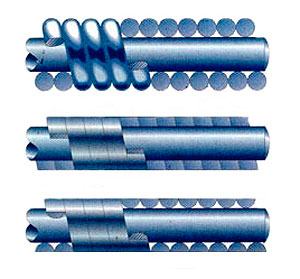
From top: Cross-section of roundwound, flatwound, and groundwound bass strings. Image courtesy of Fender Musical Instruments Corp.
Taperwound: Not to be confused with tapewound strings, taperwounds are available in all of the winding methods mentioned above. They taper gradually or abruptly at the bridge so that the core wire makes direct contact with the bridge saddles to enhance sustain. It’s particularly important to purchase taperwound strings that match your scale length so the tapered portion of the string falls in the correct place in relation to your bridge.
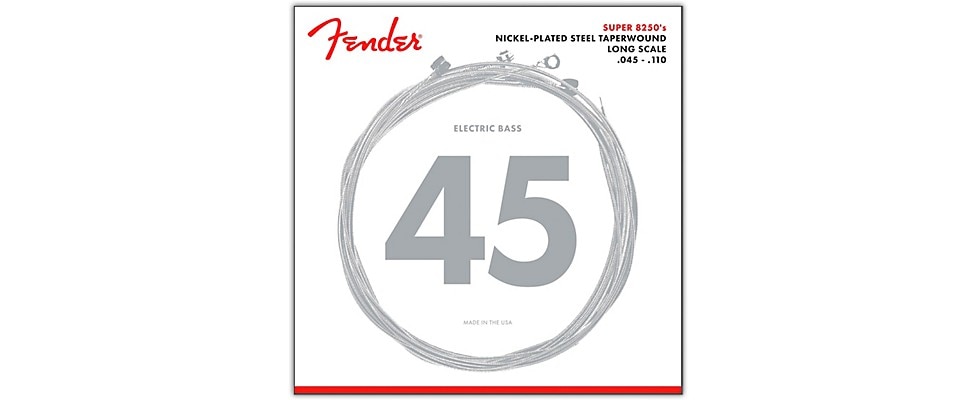
These Fender Taperwound strings maximize the transfer of their vibrations to the bridge saddles for enhanced sustain.
Bass String Materials
The metal alloys used in strings also impact their feel, tone, and durability. Here are the characteristics of the most common materials:
Nickel-Plated Steel: Probably the most popular string material, they have a comfortable feel and bright tone that’s the choice of bassists in many different music genres.
Pure Nickel: With less magnetic attraction than steel strings, they produce a warmer, vintage tone. They offer the sound of ‘50s and early ‘60s pop, rock, and country bass.
Stainless Steel: They produce a very bright tone with good corrosion resistance. Popular with rock, jazz, and metal players.
Copper-Plated Steel: Retaining the bright, sparkly response of steel, their thin copper coating produces rich acoustic overtones.
Polymer-Coated Strings: Many manufacturers use synthetic coating materials that extend string life by protecting them from corrosion. The effect on tone varies from one manufacturer to the next.
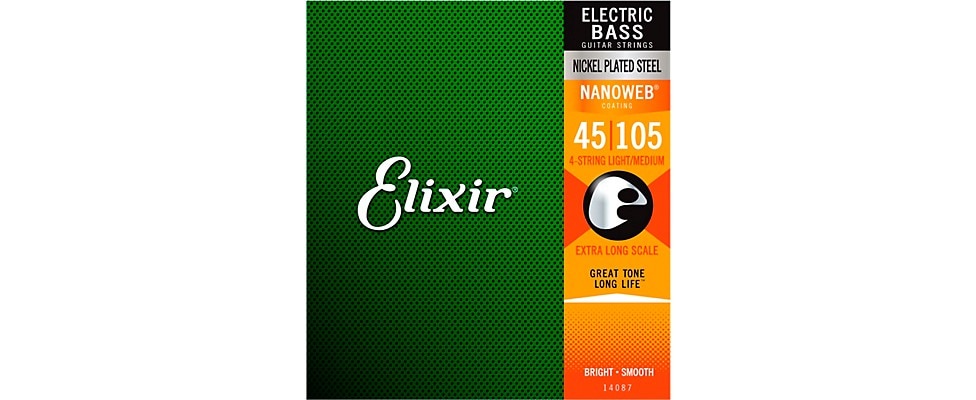
Elixir's Nanoweb bass strings have a proprietary coating that protects them from grunge buildup and oxidation greatly extending their life.
Color-Coated Strings: Some coatings have coloring agents that can add some spice to your instrument’s visual impact while also offering extended life and smooth playability.
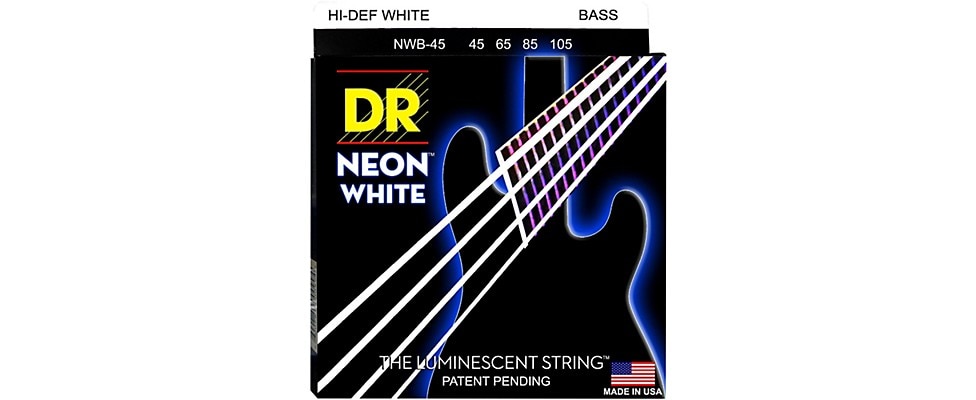
DR Strings offer a variety of bass strings including this NEON White coated set that combine longevity with cool visuals; this bright white set glows under ultraviolet stage lights.
To make shopping simpler, you can browse Musician’s Friend’s diverse assortment of electric bass guitar strings and acoustic bass guitar strings using these filters:
- String Gauge
- String Material
- Coated/Uncoated
- Winding Material
- Number of Strings





































































































































